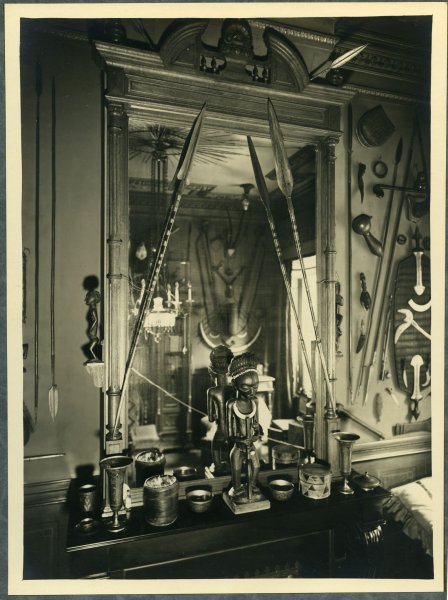EO.0.0.31660

Voorouderbeeld dat bekendstaat als Lusinga / Statue d’ancêtre connu sous le nom de Lusinga / Ancestral statue known as Lusinga. Marungu, Tanganyika, RD Congo. [Tabwa]. Before 1885. Wood (Vitex madiensis), pigment, chicken feather, warthog tooth, monitor lizard, cotton, glass beads. War booty. Gift from the widow of E. Storms. 1930. EO.0.0.31660.
Acquired during a violent period
The widow of the military man Emile Storms (1846-1918) gave the collections of her late husband to the museum in 1930. The collection contains various elements of Storms’ equipment, some documents and nearly 340 ethnographic objects. These ethnographic objects were acquired in the eastern part of DR Congo, while he was on an ‘exploratory mission’ for the Association Internationale Africaine that reached to the shores of Lake Tanganyika. The mission resulted in the creation of the Mpala station on May 10th 1883, where Storms was located for more than two years, up until his final departure from Congo in July 1885.
A symbol of victory
This statue represents the male ancestors of Lusinga lwa Ng'-ombe (ca. 1840-1884), a Tabwa-chief from the Marungu region in the east of DR Congo. Lusinga was the most important opponent of the Belgian officer Emile Storms, who tried to control the areas west of Tanganyika. Lusinga was decapitated during a punitive military expedition that was organised by Storms on December 4th 1884. Not only his enemy’s skull, but also food and other possessions, including this statue, were confiscated. By appropriating this symbol of the matrilineal dynastic line of the murdered chief, he symbolically consolidated his victory. The inclusion of this statue in the Belgian officer’s private collection illustrates the value of this so-called ‘war trophy’. It was displayed amongst a collection of panoplies in the reception area of his home in Brussels.
